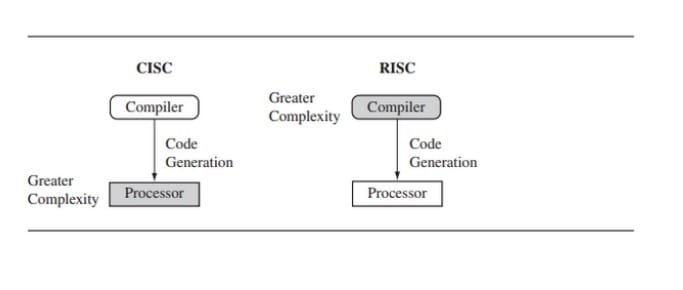CISC vs RISC Architecture
“Complex Instruction Set Computing” is the abbreviation for CISC This is a design for a microprocessor. The CISC architecture comprises a significant number of computer instructions that range in complexity and specialization from simple to complicated and specialized. Though the architecture was meant to calculate complicated instructions as quickly as possible, it was eventually discovered that numerous little, short instructions could do so more quickly. “ Reduced Instruction Set Computing “ (RISC) became the second primary type of microprocessor architecture as a result of this. The Intel Pentium CPUs are mostly CISC-based with some RISC features, whereas the PowerPC processors are entirely RISC-based. The entire article deal the CISC vs RISC advantages. Click here to access complete series of ARM.

RISC is an acronym for Reduced Instruction Set Computer. The instruction set of a computer is streamlined in the Reduced Instruction Set Computer (RISC) architecture to minimize execution time. The RISC instruction set is rather tiny, and it mostly consists of register-to-register operations.
For computations, data is stored in CPU registers, and the results of the computations are transferred to memory using store instructions. All operations are carried out within the CPU’s registers. Because all RISC instructions employ basic register addressing, there are fewer addressing modes.
RISC has a basic instruction format that is straightforward to decipher. The length of the instruction can be set here, and it can be aligned on word boundaries. Each clock cycle, RISC processors may execute one instruction.
This is accomplished by the use of pipe-lining, which involves overlapping the fetch, decode, and execute phases of two or three instructions. As RISC takes relatively a large number of registers in the processor unit, it takes less time to execute its program when compared to CISC.
Difference between CISC vs RISC
| CISC | RISC |
| It is equipped with a micro programming device. | It features a hard-wired programming device. |
| The instruction set contains a number of distinct instructions that may be utilized to do more complicated tasks. | The number of instructions has decreased, and most of them are extremely basic. |
| With a focus on hardware, performance is maximized. | With a focus on software, performance is maximized. |
| There is only one register set. | There are many register sets present. |
| They’re primarily unpiped or haven’t been piped at all. | These processors have a lot of pipelines. |
| The execution time is really long. | The execution time is short. |
| Expansion of the code is not an issue. | It’s possible that code expansion will cause a problem. |
| Instruction decoding is a difficult task. | Instructions are straightforward to decode. |
Now, let us look in to the advantages of the CISC vs RISC for the better selection of the architecture based on the requirement.
CISC Vs RISC Advantages
- In CISC it is easy to add new commands into the chip without need to change the structure of the instruction set.
- This architecture allows you to make efficient use of main memory.
- The compiler should not be very complicated, as with the case of CISC.
- The instruction sets can be written to match the structures of high-level languages.
- Complex and efficient machine instructions.
- It offers extensive addressing capabilities for memory management.
- Relatively few registers when compared with RISC processors
- It helps you to reduce the instruction set.
- Offers limited addressing schemes for memory operands
Examples of CISC
– Intel 386, Intel 486, Pentium, Pentium Pro, Pentium II, etc.
Examples of RISC
– IBM RS6000, DEC Alpha 21064, DEC Alpha 21164, etc.
These were the basic CISC vs RISC things.
Reference – https://riscv.org/
